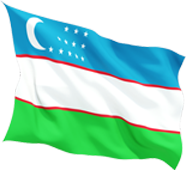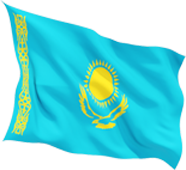The principles of a “social state”, as defined in the renewed Constitution of the Republic of Uzbekistan, adopted in 2023, require the unconditional provision of citizens’ interests and rights to social protection, a fundamental improvement in the quality of social services provided to the population, as well as the implementation of a completely new management system in this sphere based on advanced international standards.
The Basic Law of our country stipulates that the State shall take measures to ensure employment of citizens, to protect them against unemployment and to reduce poverty (Article 43).The rights of the incapacitated and lonely elderly, persons with disabilities and other socially vulnerable groups are under the protection of the State (Article 57).
The State is committed to implementing an effective and targeted policy of social protection and poverty reduction, including mechanisms to increase the income of the able-bodied population and social protection mechanisms for vulnerable groups.
The “Uzbekistan 2030” strategy aims to “create decent conditions for the fulfilment of each person’s potential” through reforms in the education and health sectors, a review of the social services system and measures to reduce poverty.
The country has already adopted a social protection strategy for the period to 2030 and established the National Agency for Social Protection under the President of the Republic of Uzbekistan, with units in all regions and “Inson” social service centres in every city and district of the Republic.
A Poverty Reduction Strategy project has been developed for the period up to 2030, which includes priorities such as ensuring macroeconomic stability, implementing a balanced regional policy, comprehensive development of infrastructure and entrepreneurship, and ensuring employment. In addition to economic mechanisms, there are plans to increase the efficiency of the education and health systems and to improve the system of social assistance and services for vulnerable groups.
A national poverty line has been established based on minimum consumer expenditure. According to this criterion, the poverty rate was 17% in 2021, decreased to 14% in 2022, and is estimated to further reduce to 12% in 2023.
The goal is to double the economy’s volume by 2030 and join the ranks of countries with above-average incomes. In addition, there are plans to halve poverty by 2026.
In order to enhance the specificity of assistance measures, the country has changed its approach to identifying families and citizens in need of state support. The use of “iron,” “women’s,” and “youth” notebooks in makhallas is employed for the registration of those in need. To ensure accuracy and transparency in the distribution of allowances, a single electronic information database, the Social Protection Single Registry, has been established. As a result, the coverage of needy families receiving social assistance has increased. For instance, in 2019, 595 thousand families received social benefits and assistance through the Social Protection Single Registry, by the end of 2022, this number had quadrupled to 2.2 million families. Nearly 11.4 trillion Uzbek soums (equivalent to over 1 billion USD) were allocated for these purposes.
Families registered in this information system as low-income families receive not only child benefits and material assistance but also social services and assistance either for free or on preferential terms. For example, they are exempted from parental fees in state preschool educational institutions, as well as from expenses for education in art schools, music schools, “Barkamol avlod” centers, and other extracurricular educational institutions. They also receive free medical care in specialized medical institutions, etc.
It can be said that Uzbekistan is systematically working to reduce poverty through the implementation of a national model. China’s experience in poverty reduction, which is difficult to replicate due to the unique conditions in each country, is useful. However, certain aspects of the Chinese success story, such as a comprehensive approach and a people-centred approach to poverty reduction, have also been applied in Uzbekistan.
First. Similarly to China, Uzbekistan has identified the provision of employment, the increase of labour income and the implementation of community-based assistance, rather than the provision of benefits, as the main direction of poverty alleviation in Uzbekistan.
In China, people’s aspirations for a better life have become a powerful driving force in the fight against poverty, overcoming the state of immobile waiting and dependency and creating a realization that only hard work can fundamentally change the situation.
China decided to allocate 1 billion yuan annually since 1994 to finance infrastructure projects in order to employ the poor. Investments has increased and measures have been taken to accelerate the construction of roads, railways, freight transportation, energy supply, and the provision of IT in poor regions.
The adult participation in vocational training has become widespread. New opportunities for technical training and employment have opened up for people in poor areas.
Drawing on the Chinese experience, Uzbekistan has also chosen the path of poverty reduction by mobilizing low-income households themselves. In order to secure jobs, develop entrepreneurship and reduce poverty, an “assistant khokim” office is being set up to train and employ unemployed members of poor families, people with disabilities and vulnerable women.
In 2022, assistant khokims helped train more than 220,000 job seekers, contributed to the employment of 3.2 million citizens, provided preferential loans of 10 trillion Uzbek soums ($913.8 million) and subsidies of 263 billion Uzbek soums ($24 million) to 75,000 unemployed people, while about 430,000 citizens received land plots on lease for organizing and running entrepreneurial activities. In 2023, these activities will be further intensified, resulting in the employment of about 4 million unemployed citizens in various sectors of the economy by the end of the year.
Since 2021, the sectoral specialization of each makhalla has been identified, taking into account the specific local conditions; currently there are almost 10,000 makhalla throughout the country. Approximately 2,500 makhallas specialize in agriculture and horticulture, and almost as many in the service sector. The state allocates funds, land, and empty buildings, exempts them from land and property taxes and creates favorable conditions for entrepreneurship. These support measures are primarily aimed at providing employment for the currently jobless and low-income citizens.
Second. Introduction of the Chinese experience of interregional, interdepartmental, intergroup assistance to poor regions.
Poverty alleviation in China involves all regions, government departments and enterprises. For instance, nine provinces in the east jointly supported 14 provinces in the central and western regions, 343 economically developed cities and districts in the east and 537 poor cities and districts in the central and western regions carried out the “Together for a Moderately Prosperous Society” campaign. Nearly 12 million people have been resettled from poor regions with difficult conditions through private investment.
In Uzbekistan, for example, targeted projects in 18 directions have been prepared with the help of experienced Chinese specialists. Poverty reduction programmes are being developed in each region of the country, including the improvement of road transport, electricity, communications and tourism infrastructure. Modern approaches to innovation development, green technologies and modern management will also be applied in the regions.
A new model of comprehensive support and services for families in difficult life situations on an individual basis will be introduced. In 2023, “Inson” social service centres were established in 28 districts and cities of Uzbekistan and began working under the new system of social assistance. Professional social services for individuals and families in difficult situations and at high risk of destitution will now receive a comprehensive approach directly at the makhalla level.
In world practice, the system of “social work” using the “case management” method is widespread. Here, the word “poor” as a social stigma (tag, label) is not used, but rather the term “difficult life situation” is applied – it refers to a situation that objectively disrupts a person’s livelihood, which he or she cannot overcome on his or her own. Such a case can be disability, illness, orphanhood, disadvantage, unemployment, homelessness, family conflicts and violence, etc.
In many countries a “Code of Ethics for Social Workers” has been developed, based on the recommendations of the International Federation of Social Workers, which prescribes the principles of social work (e.g. confidentiality), standards of ethical behaviour, basic rights and duties of a social worker, etc.
The peculiarity of this method is that a person in a difficult life situation (crisis) uses his/her inner potential and external sources to solve his/her problem. The task of professional social workers is to help restore the social functioning of the family and overcome the crisis.
The individual and integrated approach adopted by the social workers begins with the diagnosis of the family, the study of its problems and its need for social services, then the development of an individual plan for working with the family, on the basis of which assistance and social services are progressively provided by the relevant ministries and departments.
It should be noted that social work does not only take place at the family level. Where society has stereotypical perceptions of people in crisis, such as children or women who have been subjected to violence, specialists begin to interact with the population of a makhalla, district or city, changing their attitudes towards people in need of help.
As the profession of social work is integral in nature, combining theoretical knowledge, practical skills and competencies from adjacent disciplines, the training of highly qualified social workers in Uzbekistan will increase the effectiveness and efficiency of local work with families in need.
Third, to establish long-term sustainable mechanisms and innovative methods of poverty reduction that both meet the needs of the poor and lead to sustainable growth.
China’s 14th Five-Year Development Plan (2021-2025) has been adopted as the starting point to achieve the set goals and provide a framework. The plan focuses on improving human capital levels, access to quality public services and enrolment in higher education, as technological upgrading will require a more highly skilled workforce.
Uzbekistan already attaches great importance to long-term planning. In fact, the country’s adopted ‘Uzbekistan 2030’ strategy provides for the implementation of five long-term priority areas, including the creation of decent conditions for the fulfilment of each person’s potential.
Today, Uzbekistan is implementing measures to provide state-guaranteed services in education and healthcare. In particular, the number of non-state preschool education institutions has increased from 1,400 to 22,800 and, correspondingly, the number of private and foreign higher education institutions has increased from 7 to 95 during the period 2017-2022. As a result, the enrolment rate of children in preschool education has risen to 71. 8%, and the coverage rate of young people in higher education has risen to 42%.
Conditions have been created to ensure access to medical services, especially for the poor. For instance, 500 makhalla health centres, 30 family polyclinics and 110 family doctors’ surgeries were established in 2023, increasing the volume of primary healthcare provided locally.
A package of state-guaranteed free medical services and medicines has been developed.
China’s positive experience has inspired our country to build a national poverty alleviation model. In fact, China is the first developing country to achieve the UN Millennium Development Goal on poverty reduction. The statistics of our efforts are indeed impressive. In 40 years of reform and opening-up, more than 740 million Chinese people have been lifted out of poverty, and the poverty rate has been reduced by 94%.
China’s experience can help Uzbekistan create its own success story and contribute to achieving the poverty reduction targets of the 2030 Sustainable Development Goals.
Dildora Karimova,
Doctor of Economics, Project Manager, Institute for Macroeconomic and Regional Studies under the Cabinet of Ministers of the Republic of Uzbekistan











